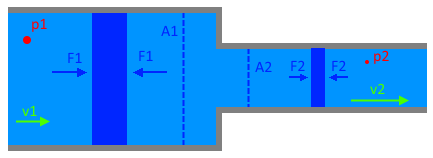It is stated that decreased pressure creates increased velocity.
However, lets say we are increasing the area:
Per Constant=(A)(V), an increase in area would decrease the velocity.
then, per P=F/A, an increase area would decrease the pressure.
Therefore, those conditions decrease the pressure while decreasing the velocity, instead of the aforementioned phenomena of decreasing pressure creating an increase in velocity. What gives?
Thank you in advance for your help!
However, lets say we are increasing the area:
Per Constant=(A)(V), an increase in area would decrease the velocity.
then, per P=F/A, an increase area would decrease the pressure.
Therefore, those conditions decrease the pressure while decreasing the velocity, instead of the aforementioned phenomena of decreasing pressure creating an increase in velocity. What gives?
Thank you in advance for your help!

